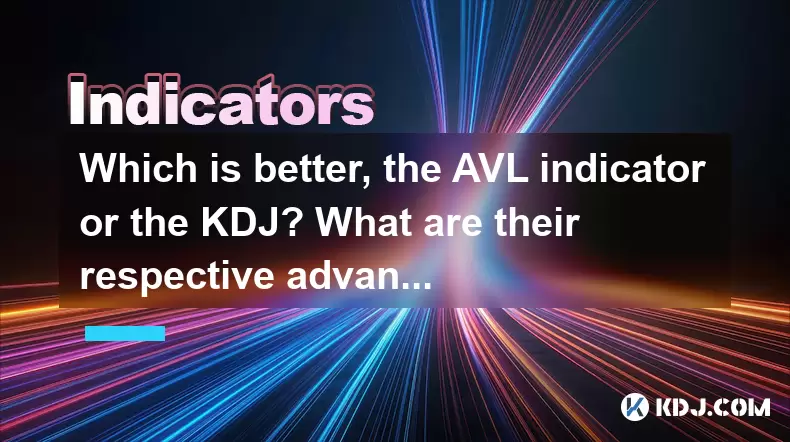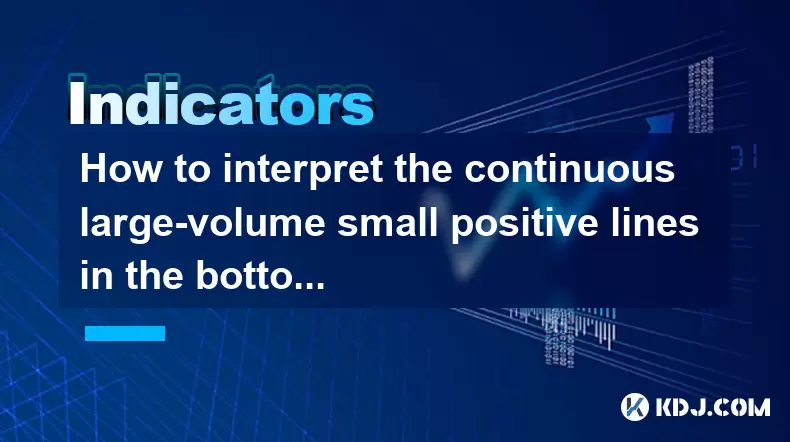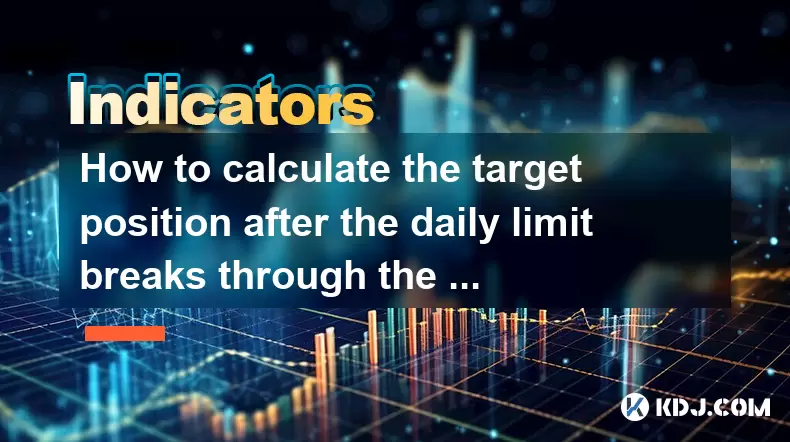-
 Bitcoin
Bitcoin $101,898.5005
-0.75% -
 Ethereum
Ethereum $2,258.1125
-1.07% -
 Tether USDt
Tether USDt $1.0004
0.01% -
 XRP
XRP $2.0178
-2.93% -
 BNB
BNB $624.0243
-1.53% -
 Solana
Solana $134.3298
-0.90% -
 USDC
USDC $0.9999
0.01% -
 TRON
TRON $0.2675
-2.05% -
 Dogecoin
Dogecoin $0.1538
-1.96% -
 Cardano
Cardano $0.5482
-1.11% -
 Hyperliquid
Hyperliquid $35.5636
5.45% -
 Bitcoin Cash
Bitcoin Cash $453.4902
-1.66% -
 Sui
Sui $2.5134
-2.97% -
 UNUS SED LEO
UNUS SED LEO $9.1292
1.77% -
 Chainlink
Chainlink $11.8457
-1.60% -
 Stellar
Stellar $0.2312
-2.73% -
 Avalanche
Avalanche $16.9721
0.29% -
 Toncoin
Toncoin $2.7549
-3.82% -
 Shiba Inu
Shiba Inu $0.0...01081
-1.10% -
 Litecoin
Litecoin $80.8250
-0.71% -
 Hedera
Hedera $0.1374
0.21% -
 Monero
Monero $305.4827
-2.36% -
 Ethena USDe
Ethena USDe $1.0006
0.00% -
 Dai
Dai $1.0000
-0.01% -
 Polkadot
Polkadot $3.2085
-3.12% -
 Bitget Token
Bitget Token $4.0845
-3.13% -
 Uniswap
Uniswap $6.3353
-1.63% -
 Pi
Pi $0.5085
-0.70% -
 Pepe
Pepe $0.0...08913
-3.82% -
 Aave
Aave $232.7090
-0.58%
Which is better, the AVL indicator or the KDJ? What are their respective advantages and disadvantages?
AVL indicator confirms trends using volume data, ideal for long-term trading, while KDJ's sensitivity suits short-term trades, identifying quick market shifts.
May 24, 2025 at 05:56 am

When it comes to technical analysis in the cryptocurrency market, traders often rely on various indicators to make informed decisions. Two popular indicators among traders are the AVL indicator and the KDJ indicator. Each has its own set of advantages and disadvantages, and understanding these can help traders choose the right tool for their trading strategy. In this article, we will delve into the details of the AVL and KDJ indicators, comparing their functionalities, strengths, and weaknesses.
What is the AVL Indicator?
The AVL (Average Volume Line) indicator is a technical analysis tool designed to measure the average trading volume over a specific period. This indicator helps traders understand the strength behind price movements by showing whether a price change is backed by significant trading volume. The AVL indicator is plotted as a line on the chart, which can be compared with the price action to identify trends and potential reversals.
The primary use of the AVL indicator is to confirm trends. When the price is rising and the AVL line is also rising, it suggests strong buying pressure and a likely continuation of the uptrend. Conversely, if the price is falling and the AVL line is falling, it indicates strong selling pressure and a potential continuation of the downtrend.
However, the AVL indicator has its limitations. It can be slow to react to sudden changes in market conditions, as it relies on an average of volume data. This means that it may not be the best tool for short-term trading or for identifying rapid market shifts. Additionally, the AVL indicator does not provide buy or sell signals on its own; it must be used in conjunction with other indicators or price action analysis.
What is the KDJ Indicator?
The KDJ (K, D, and J lines) indicator is another popular tool used in technical analysis, particularly in the cryptocurrency market. The KDJ indicator is a momentum oscillator that combines aspects of the Stochastic Oscillator and the Relative Strength Index (RSI). It consists of three lines: the K line, the D line, and the J line. The K and D lines are used to generate buy and sell signals, while the J line is often used to confirm these signals.
The KDJ indicator is primarily used to identify overbought and oversold conditions in the market. When the K and D lines cross above the 80 level, it suggests that the market is overbought and a price correction may be imminent. Conversely, when the K and D lines cross below the 20 level, it indicates that the market is oversold and a price rebound might be expected. The J line can provide additional confirmation, as a value above 100 suggests extreme overbought conditions, and a value below 0 indicates extreme oversold conditions.
One of the main advantages of the KDJ indicator is its sensitivity to price movements. It can quickly identify potential turning points in the market, making it a valuable tool for short-term trading. However, this sensitivity can also be a disadvantage, as it may generate false signals in volatile markets. Traders need to use the KDJ indicator in conjunction with other tools and consider the overall market context to filter out these false signals.
Comparing AVL and KDJ: Advantages and Disadvantages
When comparing the AVL and KDJ indicators, it's important to consider their respective advantages and disadvantages to determine which might be better suited for a particular trading strategy.
Advantages of the AVL Indicator:
- Trend Confirmation: The AVL indicator is excellent for confirming trends, as it shows whether price movements are supported by significant trading volume.
- Long-Term Analysis: It is well-suited for long-term trading strategies, as it provides a clear picture of the strength behind price movements over time.
Disadvantages of the AVL Indicator:
- Slow Reaction: The AVL indicator can be slow to react to sudden market changes, making it less effective for short-term trading.
- No Direct Signals: It does not provide direct buy or sell signals, requiring traders to use it in combination with other tools.
Advantages of the KDJ Indicator:
- Sensitivity: The KDJ indicator is highly sensitive to price movements, making it effective for identifying short-term trading opportunities.
- Overbought/Oversold Signals: It can quickly identify overbought and oversold conditions, providing clear signals for potential price reversals.
Disadvantages of the KDJ Indicator:
- False Signals: The sensitivity of the KDJ indicator can lead to false signals, especially in volatile markets.
- Complexity: It requires a good understanding of its components and signals, as well as the use of additional tools to confirm its readings.
Using the AVL Indicator in Cryptocurrency Trading
To use the AVL indicator effectively in cryptocurrency trading, follow these steps:
- Select the Right Timeframe: Choose a timeframe that aligns with your trading strategy. For long-term analysis, use daily or weekly charts. For medium-term trading, use hourly or 4-hour charts.
- Add the AVL Indicator to Your Chart: Most trading platforms allow you to add the AVL indicator to your chart. Look for the indicator in the list of available tools and apply it to your chosen timeframe.
- Analyze the AVL Line: Observe the AVL line in relation to the price action. A rising AVL line alongside a rising price suggests strong buying pressure, while a falling AVL line with a falling price indicates strong selling pressure.
- Confirm Trends: Use the AVL indicator to confirm trends identified through other means. If the price is trending upwards and the AVL line is also rising, it confirms the strength of the uptrend.
- Combine with Other Indicators: Since the AVL indicator does not provide direct buy or sell signals, combine it with other technical analysis tools, such as moving averages or trend lines, to make informed trading decisions.
Using the KDJ Indicator in Cryptocurrency Trading
To use the KDJ indicator effectively in cryptocurrency trading, follow these steps:
- Select the Right Timeframe: Choose a timeframe that aligns with your trading strategy. For short-term trading, use 15-minute or 1-hour charts. For medium-term trading, use 4-hour or daily charts.
- Add the KDJ Indicator to Your Chart: Most trading platforms allow you to add the KDJ indicator to your chart. Look for the indicator in the list of available tools and apply it to your chosen timeframe.
- Monitor K and D Lines: Watch for crossovers between the K and D lines. A bullish signal is generated when the K line crosses above the D line, while a bearish signal is generated when the K line crosses below the D line.
- Identify Overbought/Oversold Conditions: Pay attention to the levels of the K and D lines. When they cross above 80, it suggests overbought conditions, and when they cross below 20, it indicates oversold conditions.
- Use the J Line for Confirmation: The J line can provide additional confirmation of the K and D line signals. A J line value above 100 suggests extreme overbought conditions, while a value below 0 indicates extreme oversold conditions.
- Combine with Other Indicators: To filter out false signals, use the KDJ indicator in conjunction with other tools, such as moving averages or the RSI, to confirm its readings.
Choosing Between AVL and KDJ: Which is Better?
Deciding whether the AVL indicator or the KDJ indicator is better depends on your trading style and objectives. If you are focused on long-term trading and want to confirm trends with volume data, the AVL indicator may be the better choice. Its ability to show the strength behind price movements can help you make more informed decisions about entering or exiting trades over a longer period.
On the other hand, if you are engaged in short-term trading and need a tool that can quickly identify potential price reversals, the KDJ indicator might be more suitable. Its sensitivity to price movements and ability to signal overbought and oversold conditions can help you capitalize on short-term opportunities in the market.
Ultimately, the best approach may be to use both indicators in your trading strategy. The AVL indicator can provide valuable insights into the strength of trends, while the KDJ indicator can help you identify potential entry and exit points. By combining these tools, you can create a more comprehensive analysis of the market and make more informed trading decisions.
Frequently Asked Questions
Q1: Can the AVL and KDJ indicators be used together effectively?
Yes, the AVL and KDJ indicators can be used together effectively. The AVL indicator can help confirm the strength of trends, while the KDJ indicator can provide signals for potential entry and exit points. By combining these tools, traders can gain a more comprehensive view of the market and make more informed trading decisions.
Q2: Are there any specific cryptocurrencies that work better with the AVL or KDJ indicators?
The effectiveness of the AVL and KDJ indicators does not depend on specific cryptocurrencies. These indicators can be applied to any cryptocurrency pair. However, it's important to consider the overall market context and the specific characteristics of the cryptocurrency you are trading, as these can influence the reliability of the indicators.
Q3: How can I adjust the settings of the AVL and KDJ indicators to suit my trading strategy?
To adjust the settings of the AVL indicator, you can change the period over which the average volume is calculated. A shorter period will make the indicator more sensitive to recent volume changes, while a longer period will provide a smoother, more stable line. For the KDJ indicator, you can adjust the periods for the K, D, and J lines. Shorter periods will make the indicator more sensitive to price movements, while longer periods will provide more stable signals. Experiment with different settings to find what works best for your trading strategy.
Q4: Are there any other indicators that work well with the AVL and KDJ indicators?
Yes, several other indicators can be used in conjunction with the AVL and KDJ indicators to enhance your trading strategy. For the AVL indicator, moving averages and trend lines can help confirm trends identified by the volume data. For the KDJ indicator, the Relative Strength Index (RSI) and the Moving Average Convergence Divergence (MACD) can provide additional confirmation of overbought and oversold conditions. Combining these indicators can help you filter out false signals and make more accurate trading decisions.
Disclaimer:info@kdj.com
The information provided is not trading advice. kdj.com does not assume any responsibility for any investments made based on the information provided in this article. Cryptocurrencies are highly volatile and it is highly recommended that you invest with caution after thorough research!
If you believe that the content used on this website infringes your copyright, please contact us immediately (info@kdj.com) and we will delete it promptly.
- XRP Rally Meets Neo Pepe Presale: A Meme Coin Revolution?
- 2025-06-23 17:05:13
- Coin-Op Comeback: Arcade Bars, Stern, and a Director's New Venture
- 2025-06-23 16:45:12
- XRP in Japan: From Community Day Tacos to Payment Sector Transformation
- 2025-06-23 17:05:13
- LILPEPE Presale Frenzy: The Meme Coin Revolution is Here, Ya'll!
- 2025-06-23 16:45:12
- Bitcoin Crash Incoming? Kiyosaki Bets Big on Silver Amidst Global Uncertainty
- 2025-06-23 17:25:11
- Dogecoin, Meme Coins, Price Prediction: Riding the Bullish Wave?
- 2025-06-23 17:25:11
Related knowledge

Is the high opening and low closing and huge volume the next day a trap for more?
Jun 23,2025 at 05:07pm
Understanding High Opening and Low Closing with Huge VolumeWhen traders observe a high opening followed by a low closing and massive volume the next day, it often raises concerns about whether this is a trap set by larger players in the market. This pattern typically indicates strong volatility within a short period, which can confuse retail investors. ...

How to interpret the MACD's second golden cross on the water but insufficient volume?
Jun 23,2025 at 05:01pm
Understanding the MACD Indicator and Its SignificanceThe Moving Average Convergence Divergence (MACD) is a widely used technical analysis tool in cryptocurrency trading. It helps traders identify potential buy or sell signals by showing the relationship between two moving averages of an asset’s price. The MACD line, signal line, and histogram are the th...

How much volume is required for the W-bottom to break through the neckline of the time-sharing chart?
Jun 23,2025 at 04:21pm
Understanding the W-Bottom Pattern in Cryptocurrency TradingThe W-bottom pattern is a popular technical analysis formation used by traders to identify potential bullish reversals. It typically appears at the end of a downtrend and resembles the letter 'W' on price charts. In the context of cryptocurrency trading, where volatility is high and trends shif...

How to interpret the continuous large-volume small positive lines in the bottom area?
Jun 23,2025 at 04:43pm
Understanding the Basics of 'Large-Volume Small Positive Lines'In technical analysis, especially within the cryptocurrency market, the pattern known as 'large-volume small positive lines' refers to a scenario where the price increases slightly (small positive candlestick) but is accompanied by unusually high trading volume. This phenomenon typically occ...

How to read the sideways consolidation after the bottom volume and long positive line?
Jun 23,2025 at 02:28pm
Understanding the Sideways ConsolidationWhen analyzing cryptocurrency charts, sidewards consolidation refers to a phase where prices move within a narrow range without a clear upward or downward trend. This pattern often appears after significant price movements, such as a sharp increase followed by a period of equilibrium between buyers and sellers. In...

How to calculate the target position after the daily limit breaks through the previous high?
Jun 23,2025 at 02:57pm
Understanding the Daily Limit BreakthroughIn cryptocurrency trading, a daily limit typically refers to the maximum price movement allowed within a single trading day on certain exchanges. When this limit is breached, especially when it surpasses the previous high, traders often seek to calculate the target position or expected price movement following s...

Is the high opening and low closing and huge volume the next day a trap for more?
Jun 23,2025 at 05:07pm
Understanding High Opening and Low Closing with Huge VolumeWhen traders observe a high opening followed by a low closing and massive volume the next day, it often raises concerns about whether this is a trap set by larger players in the market. This pattern typically indicates strong volatility within a short period, which can confuse retail investors. ...

How to interpret the MACD's second golden cross on the water but insufficient volume?
Jun 23,2025 at 05:01pm
Understanding the MACD Indicator and Its SignificanceThe Moving Average Convergence Divergence (MACD) is a widely used technical analysis tool in cryptocurrency trading. It helps traders identify potential buy or sell signals by showing the relationship between two moving averages of an asset’s price. The MACD line, signal line, and histogram are the th...

How much volume is required for the W-bottom to break through the neckline of the time-sharing chart?
Jun 23,2025 at 04:21pm
Understanding the W-Bottom Pattern in Cryptocurrency TradingThe W-bottom pattern is a popular technical analysis formation used by traders to identify potential bullish reversals. It typically appears at the end of a downtrend and resembles the letter 'W' on price charts. In the context of cryptocurrency trading, where volatility is high and trends shif...

How to interpret the continuous large-volume small positive lines in the bottom area?
Jun 23,2025 at 04:43pm
Understanding the Basics of 'Large-Volume Small Positive Lines'In technical analysis, especially within the cryptocurrency market, the pattern known as 'large-volume small positive lines' refers to a scenario where the price increases slightly (small positive candlestick) but is accompanied by unusually high trading volume. This phenomenon typically occ...

How to read the sideways consolidation after the bottom volume and long positive line?
Jun 23,2025 at 02:28pm
Understanding the Sideways ConsolidationWhen analyzing cryptocurrency charts, sidewards consolidation refers to a phase where prices move within a narrow range without a clear upward or downward trend. This pattern often appears after significant price movements, such as a sharp increase followed by a period of equilibrium between buyers and sellers. In...

How to calculate the target position after the daily limit breaks through the previous high?
Jun 23,2025 at 02:57pm
Understanding the Daily Limit BreakthroughIn cryptocurrency trading, a daily limit typically refers to the maximum price movement allowed within a single trading day on certain exchanges. When this limit is breached, especially when it surpasses the previous high, traders often seek to calculate the target position or expected price movement following s...
See all articles
























































































